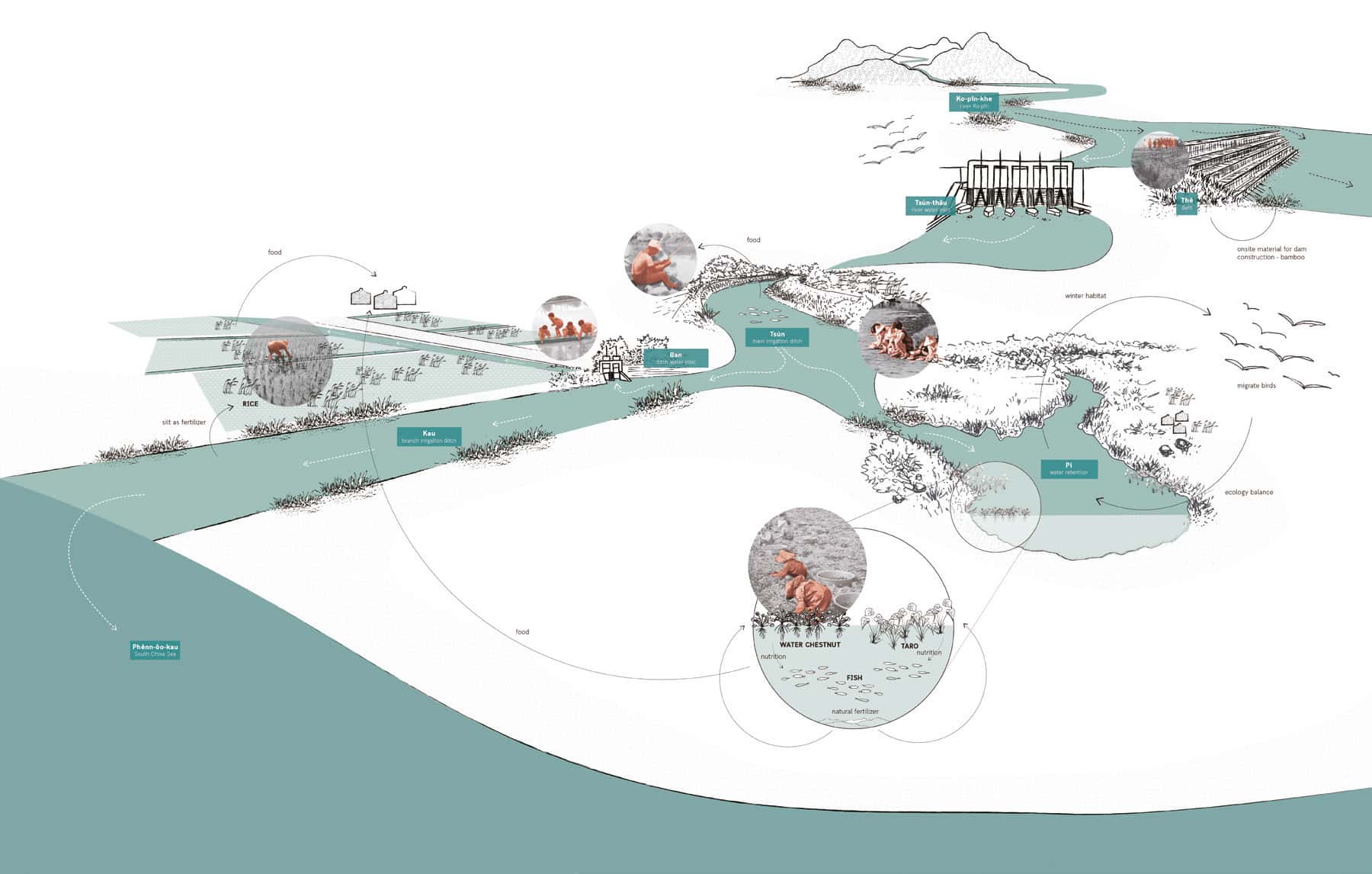
Using the lllustrative Method to Learn from Long-Lasting Water Systems

Downloads
DOI:
https://doi.org/10.58981/bluepapers.2022.1.11Published
Issue
Section
License
Copyright (c) 2022 Inge Bobbink, Amina Chouairi, Camilla Di Nicola

This work is licensed under a Creative Commons Attribution 4.0 International License.
How to Cite
Abstract
To analyze traditional water systems and their development over time, researchers I. Bobbink and M. Ryu developed the so-called Illustrative Method in 2017 based on former water systems studies. The method visualizes connections between spatial, social, and cultural aspects of water systems in a standardized way. It provides insight into unique local patterns, forms the foundation for comparative analysis and can ultimately inform the creation of new water systems for future sustainable development.
References
Bobbink, Inge, and Suzanne Loen. 2010. Water InSight: an Exploration into Landscape Architectonic Transformations of Polder Water. Amsterdam: Sun Uitgeverij.
Bobbink, Inge. 2019. “Testing the Illustrative Method: How to Reveal Hidden Knowledge Stored in Traditional Water Systems.” In Lessons from the Past, Visions for the Future: Celebrating One Hundred Years of Landscape Architecture Education in Europe, edited by Lei Gao and Shellen Egoz. Ås: Norwegian University of Life Sciences.
Bobbink, Inge, and Suzanne Loen. 2020. “Visual Water Biography: Translating Stories in Space and Time.” SPOOL, 7(2), 5–22. https://doi.org/10.7480/spool.2020.2.4859
Rivero Lamela, G. 2020. The Architecture of a Productive Territory: The Water Mills of the Sierra de Cádiz. PhD thesis, University of Seville.
Ryu, M. 2012. Typologies for Sustainable Water Use in Historical Japanese Towns. http://architectuurfonds.nl/content/pro/i_928/120620SfA_sorakara.pdf


